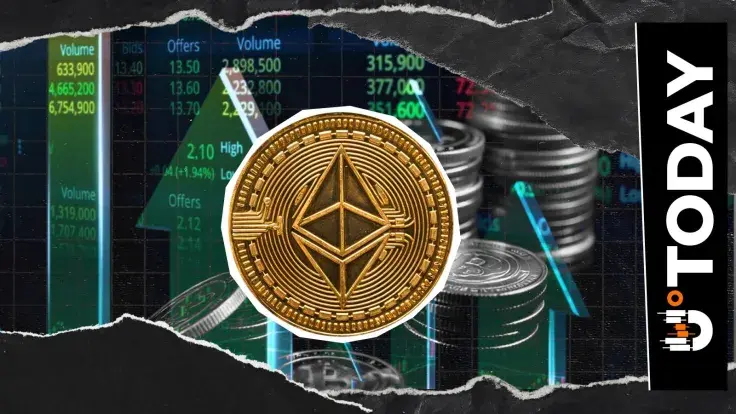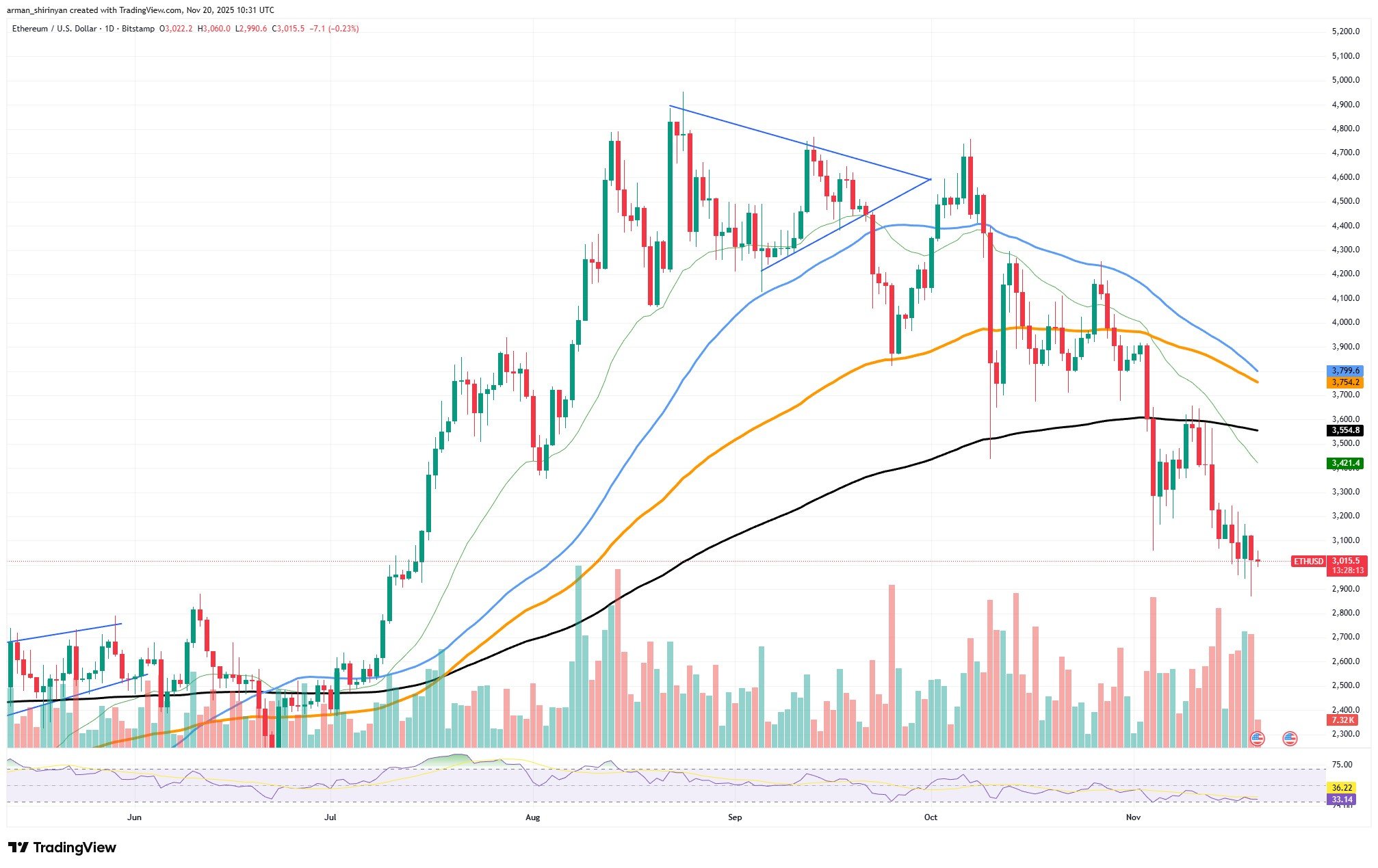
Disclaimer: The opinions expressed by our writers are their own and do not represent the views of U.Today. The financial and market information provided on U.Today is intended for informational purposes only. U.Today is not liable for any financial losses incurred while trading cryptocurrencies. Conduct your own research by contacting financial experts before making any investment decisions. We believe that all content is accurate as of the date of publication, but certain offers mentioned may no longer be available.
On the surface, Ethereum's price movement appears appalling. The market entered a deeper correction after a clear break below $3,000, sentiment is still uncertain and technical indicators point to weakness. The long-term structural narrative, however, is not merely intact.
Ethereum quietly growing
ETH staking has quietly surged to a new all-time high once more, while traders freak out over daily candles. With over 33 million ETH locked away, there is an unprecedented degree of long-term alignment with Ethereum's future. That does not qualify as speculative money flipping. It is conviction capital — ETH holders willingly taking liquidity out of the market for years, knowing full well that they will not be able to quickly withdraw if sentiment changes.

In a fearful setting, this behavior is the exact opposite of what you would anticipate. The cost is dropping. Macro is unpredictable. Risk appetite is decreasing. However, staking continues to increase in a straight line. The disconnect reveals everything: real Ethereum owners are not giving up, but traders are terrified. They are stepping it up.
However, the price structure still seems hazy. ETH is currently trading firmly below $3,000 after failing to maintain the mid-$3,000 range. The chart displays a string of lower highs and significant selling volume, indicating that the bears are still in control of the momentum. Nevertheless, the decline is orderly rather than cooperative. There is no indication of structural harm to the network itself, no panic attack and no collapse in liquidity.
This is the point at which staking becomes crucial. There is less ETH in circulation, and less sell-side pressure when so much ETH is locked. It stabilizes the market and reduces the length of downtrends, but it does not magically push the market upward. When there are fewer tokens available to be dumped, you simply cannot have the same kind of cascading liquidations.
Ethereum continues to be the foundation of decentralized finance, the settlement layer for the majority of cryptocurrencies and the only significant chain with a deflationary mechanism connected to actual network activity in the long run. That is not eliminated by the current correction.
The price broke $3,000, and there is still room for further declines. However, the fundamentals reveal a different picture — a gradual, grinding transition toward long-term accumulation. ETH is positioned to recover more quickly than anticipated when sentiment eventually returns to normal.

 Dan Burgin
Dan Burgin Vladislav Sopov
Vladislav Sopov U.Today Editorial Team
U.Today Editorial Team